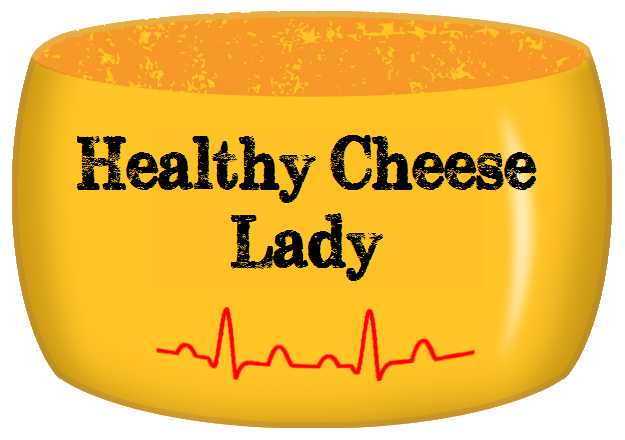TITLE:
Quantitative measurement of vitamin K2 (menaquinones) in various fermented dairy products using a reliable high-performance liquid chromatography method
AUTHORS:
Manoury, Jourdon, Boyaval, Fourcassie
LINK:
Link to PDF, full-text: Manoury2013
https://www.ncbi.nlm.nih.gov/pubmed/23332840
J Dairy Sci. 2013 Mar;96(3):1335-46. doi: 10.3168/jds.2012-5494. Epub 2013 Jan 17.
NOTES RELEVANT TO CHEESE:
The amount of Vitamin K2 in dairy is dependent upon the type of starter culture that is added to the milk.
Page 1337:
Refer to Table 1
1) The products were all dairy foods fermented with lactic acid bacteria (e.g., Lactobacillus, Streptococcus, Bifidobacterium, Lactococcus, and Leuconostoc spp.) and some also contained Propionibacterium and Corynebacterium spp., yeasts, and molds.
2) The dairy products were grouped in categories based on their cheese technologies:
- A) 4 blue cheeses (BlueC)
- B) 13 hard cheeses (HardC), including 1 Caerphilly cheese (HardC-Caer)
- C) 6 Cheddar cheeses (HardC-Ched)
- D) 1 Cheshire cheese (HardC-Ches)
- E) 2 Comté cheeses (HardC-Co)
- F) 2 Emmental cheeses (HardC-Em)
- G) 1 Leicester cheese (HardC-Lei)
- H) 1 Mozzarella cheese (Mozz)
- I) 21 mesophilic fermented milks (MFM)
- J) 11 semihard cheeses (SemiHC)
- K) 7 soft cheeses (SoftC)
- L) 5 thermophilic fermented milks (TFM)
Page 1342:
3) The daily intake of cheese is estimated at around 30 g, which could thus provide up to 33 μg of vitamin K2 or 44% of the daily dose recommended for adults by the European Food Safety Authority. Note that the recommended intake for Americans is 180 mcg/day.
4) The literature reports vitamin K2 content generally ranges from undetectable concentration to around 400 ng/g in fermented dairy products (KoivuTikkanen, 2000). However, other authors noticed values up to 800 ng/g in some cheeses (Schurgers and Vermeer, 2000; Schurgers, 2002).
5) Two fermented dairy products did not contain detectable amounts of vitamin K2: Comté cheeses and Mozzarella cheeses
6) Similarities in cheese process explain this absence of vitamin K2. For these types of products, usually only thermophilic species (Streptococcus thermophilus, Lactobacillus delbrueckii, Bifidobacterium) are used as lactic acid bacteria starter (Fox et al., 2000), and those thermophilic species are not known to be vitamin K2 producers (Collins and Jones, 1981; Morishita et al., 1999). This is also the case for a yogurt-type product also made with pure thermophilic species (Hirauchi et al., 1989; KoivuTikkanen et al., 2000).
7) All of those products contained mesophilic lactic acid bacteria species as starters and especially Lactococcus spp., which are reported to be the source of vitamin K2 (Collins and Jones, 1981; Morishita et al., 1999).
8) Two products had very high concentrations of vitamin K2:
- A soft cheese (SoftC3, up to 1,100 ng/g)
- A blue cheese (BlueC4, around 700 ng/g).
This high level is mostly due to the lactic acid bacteria used in making these cheeses, in particular Leuconostoc species (Morishita et al., 1999) and the yeasts or molds used as ripening flora.
9) Some studies suggest that the bioavailability of vitamin K2 is related to the length of the side chain, with medium-length menaquinone (e.g., MK-7) being more bioavailable than short-chain menaquinone (e.g., MK-4; Schurgers and Vermeer, 2000).
10) MK-7 is known to be the most beneficial for human health. See Table 5
11) This table shows values for the TOP TEN cheeses— rich in Vitamin K2, based on this research.
(Cheeses from the following countries were studied: France, England, Germany, Poland, The Netherlands, Denmark)
| RANK | NAME | COUNTRY | FAT:
Grams/100 G
|
pH | TOTAL
K2 |
| #1 | SOFT C3 | FRANCE | 34.0 | 5.45 | 1,179 |
| #2 | BLUE C4 | ENGLAND | 39.5 | 6.47 | 724 |
| #3 | SOFT C4 | FRANCE | 25.5 | 5.95 | 463 |
| #4 | HARD C CHEDDAR 3 | ENGLAND | 35.0 | 5.01 | 429 |
| #5 | SEMI HARD C2 | FRANCE/THE
NETHERLANDS |
29.5 | 5.25 | 428 |
| #6 | BLUE C2 | FRANCE | 29.0 | 6.44 | 361 |
| #7 | SOFT C2 | FRANCE | 27.0 | 6.60 | 332 |
| #8 | BLUE C1 | FRANCE | 41.0 | 5.57 | 317 |
| #9 | HARD C CHESHIRE | ENGLAND | 31.5 | 4.36 | 315 |
| #10 | SEMI HARD C5 | FRANCE | 26.0 | 5.05 | 308 |
12) Which cheese contained the most MK-7? BLUE C4, which also ranked 2nd in total K2.
13) In the conclusion, the authors wrote “We found no link between fat level or pH of the fermented dairy products and MK-9 content.”
***
`



